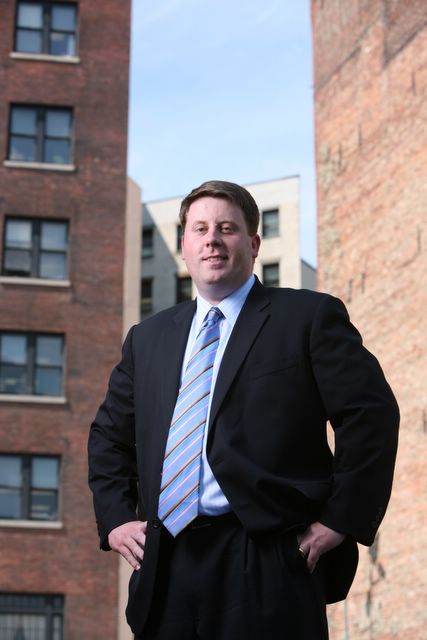It's nice to see that the Erie Canal has been making its way into the news. I wrote my Columbia University thesis on Erie Canal tourism and was very happy to be included in this article, which appeared in Albany's Times Union newspaper last June. During my semester long research I travelled every length of the Canal and interviewed over one hundred Canal users and non-users.
"Charting a brighter future"
Times Union 6/3/05
Kate Gurnett, Staff writer
Spots like this make revitalization seem "little short of madness," as Thomas Jefferson called the original "Clinton's Ditch." Broad stretches of upstate New York have seen the Erie Canal's hallmarks -- cargo, commerce and ideas -- succumb to poverty, parochialism and population decline.
Last week, Gov. George Pataki announced the latest in a string of initiatives to revive the 524-mile canal corridor. He would create a natural greenway, linked to corresponding tracts in the Hudson and Niagara river valleys. It will draw bicyclists, boaters and nature enthusiasts while boosting local tourism, he says.
His plans dovetail with a report due this month from the Erie Canalway National Corridor Commission that recommends historic preservation, heritage tourism and recreation to pep up 234 corridor communities linking the Hudson River to Lake Erie and two Finger Lakes.
If it works, the corridor -- home to 80 percent of upstaters -- could become a destination like New England, with festivals, marinas, cycling tours, winter sports, national museums and valuable real estate. Such a place would draw European and American tourists to a new "off the beaten path" vacation spot.
With a major image change, experts say. Yes, the Erie Canal has great name recognition. But many people think it disappeared with a mule named Sal. Few realize its recreational potential, says Thomas Nardacci, a Rensselaer native who wrote his Columbia University master's thesis on Erie Canal tourism.
"When you think Vermont, you think cows, barns, ice cream, scenery, and skiing. They market that message all around the country and world. New York can portray that same image with the Erie Canal: canal towns, biking, hiking, canoeing and picnics," he said.
"It's a fabulous story," said Eric Mower, who chairs the Erie Canalway National Heritage Corridor Commission. "The Erie Canal was built by people from all over the world, by immigrants, laborers, engineers from other countries ... It's part of our (state) identity, like Broadway, like the Finger Lakes, like Niagara Falls."
Still, despite 20 years of individual efforts to tout the canal, the revival is slow.
"It's one baby step at a time," said Jeff Swain, chairman of Parks & Trails New York, an Albany advocacy group that has organized a cross-state Erie Canal bike tour since 1999. The group's new guidebook, "Cycling the Erie Canal," unexpectedly sold 1,500 copies in its first year of publication.
The canal's off-road trails, scenic villages and historic sites can make it an international bicycle touring destination, said PTNY Executive Director Robin Dropkin. Bicycle owners outnumber boat owners 10-to-1 in the United States, she said. Cycling visitors spend $100 to $300 per day.
Water interest also is strong, said Lee Poinan, who owns the Colonial Belle tour boat in Fairport. "I can't tell you how many (Web site) hits we get from Europe, South America, Canada."
Some canal fans were skeptical. Government officials have talked of converting the waterway for two decades.
"I think you're gonna end up with some signage and some fluff but not a real powerful plan to promote this," Oswego County contractor Tony Pauldine told planners at a public meeting last year.
Actually, just signs would be good, some merchants say. Tourists seeking boat tours at Lockport Locks and Erie Canal Cruises in Niagara County often get lost on the way from Niagara Falls.
"Signage is the biggest problem we got," owner Mike Murphy said.
In the 19th century, canal revenues were so strong they kept New York afloat when other states defaulted. Today, the New York State Canal Corp. operates in the red. Last year's operating and capital costs were $58 million. Revenues from boat tolls were $2 million. It survives as a subsidiary of the state Thruway Authority.
A single facade improvement in one town costs $35,000, said Assemblyman Paul Tonko, D-Amsterdam. Currently, 24 Mohawk Valley Heritage Corridor communities are seeking up to $9 million in state funds.
It mounts quickly. "But without an investment to enhance the significance of place, the heritage," upstate just won't be quaint or historic, Tonko said. "It is a huge economic development tool. It's place esteem."
Since 2000, New York has funneled $260 million in federal Community Development Block grants to hundreds of upstate communities, said Glen King, director of the Governor's Office for Small Cities. The cash has helped Ilion open a new restaurant, given Little Falls a face-lift, and is rehabilitating two city blocks in Geneva at the northern end of Seneca Lake.
"It's always amazed me how many communities in New York state turned their back to their waterfront," King said. "Today, we want that back."
Add tax incentives and shared infrastructure costs and private investment should follow, the federal commission report states.
Mower, a Syracuse-based advertising mogul, hopes to tap corporate donors for a $3 million interpretive center on Pier A in Manhattan, an upstate traveling museum and a feature documentary, among other improvements. As investments pour in, so will visitors, he says.
The greatest measure of success, says King, is when private investment starts taking over.
Ultimately, what upstate needs is "an intangible," said Andrew Cuomo, who spearheaded a canal revitalization program in 1997. That is hope.
"Because a region that doesn't believe it has a future, people start to move out, the energy is negative. That becomes a self-fulfilling prophecy ... There's something to a region believing that it has a future."
If that happens, the slogan adopted by the canal commission in its report -- Changing Our Lives for the Better -- might again become a reality.




